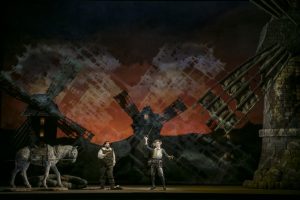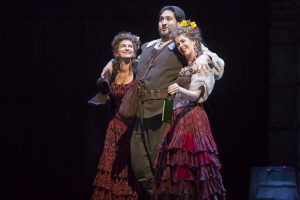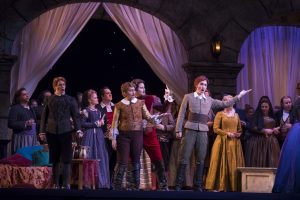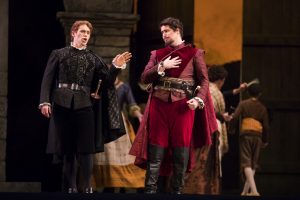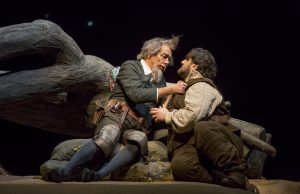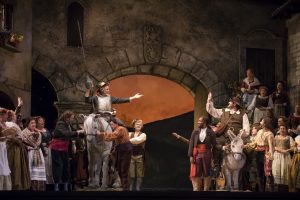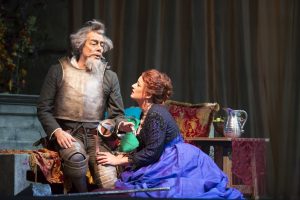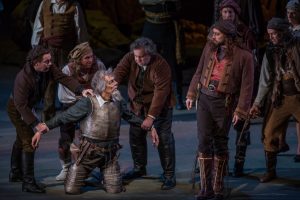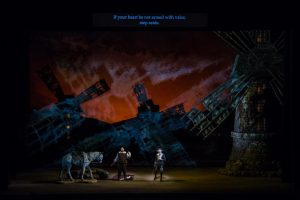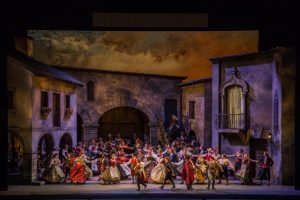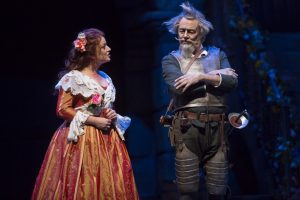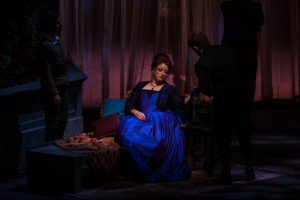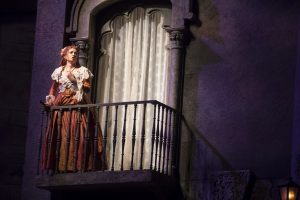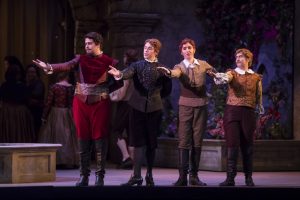SPANISH WINE IN FRENCH WINESKINS:
CLÁSICO AND CHARMANTE
Jules Massenet (1842-1912)’s Don Quichotte is a delightful opera that, in contrast to Wagner’s Das Rheingold or Berlioz’s Les Troyens, makes few demands on the audience. It is relatively short, tells a well-known story, and balances comedy and drama without overweening tragedy. Although the current production is new to Chicago, it debuted in San Diego two and one-half years ago. As someone lucky enough to have seen that excellent production, I was eager to experience it again here in Chicago. Although not identical, Lyric’s production makes use of the same sets, costumes, and leading man.
One of Massenet’s last operas, Don Quichotte (1910) is based on a French stage adaptation of Cervantes’ novel written by librettist Henri Cain. Comprised of five acts, the opera focuses on the titular character, his sidekick Sancho Panza, and his love interest Dulcinea. The plot is driven by Don Quixote’s quest to find Dulcinea’s stolen necklace. In the process, he tilts at windmills, gets kidnapped by robbers, and recovers her string of pearls. When Don Quixote returns the necklace to Dulcinea and asks for her hand in marriage, she spurns him. As he lies dying of a broken heart, Don Quixote bequeaths his dream to the ever-faithful Sancho.
It is an incredibly moving story with excellent characterization. At the outset, Sancho makes fun of Don Quixote and acts as though he is babysitting a child. But when his master successfully faces a band of robbers and retrieves Dulcinea’s necklace in Act III, a turning point is reached. In that scene, Don Quixote is revealed to be a Christ-figure. First, he is tied to a tree and left to die. Then, as the knight-errant prays, the harmonic character of the music shifts, taking on a church-like tonality. In a startling transformation, the robbers kneel before Don Quixote and beseech his blessing upon them. Following this incident, Sancho treats Don Quixote with newfound respect and lovingly comforts the knight-errant on his deathbed.
Acclaimed Italian bass Ferruccio Furlanetto has truly made the title role his own, which is evident from start to finish. Not only does he have the right physique (tall and thin) and age, but the strength, sonority, and authority of his voice are utterly captivating. Moreover, his performance is so utterly authentic and humble. It is also worth underscoring the emotional depth, poignancy, and sympathy of the master and minion or leader and follower relationship that Furlanetto and Italian baritone Nicola Alaimo as Sancho Panza share. That relationship contains a dynamism that provokes laughter as well as tears. It stands in stark contrast to the lively hauteur displayed by French mezzo-soprano Clémentine Margaine’s Dulcinea towards Don Quixote.
Dulcinea makes quite a stirring entrance into the performance. As the anticipation is built up by the singing and dancing of the villagers below her window, Margaine suddenly appears and volleys forth an exuberant cadenza showcasing her range and technical skill. Further vocal variety is provided by the casting of two trouser-clad sopranos (Diana Newman and Lindsay Metzger) and two tenors (Alec Carlson and Jonathan Johnson) as Dulcinea’s suitors. They provide some of the conflict and competition that spurs Don Quixote on his quest.
Scenic Designer Ralph Funicello opts for a realistic set design that anchors the story firmly in reality, thereby preventing it from becoming a shallow farce. Set pieces tend to be village facades arranged around an open square or centrally-placed tree or rock formations that allow free and easy movement as well as unhampered viewing. Costume Designer Missy West further contributes to the production’s realism with an array of period gowns, knee breeches, and hose. Director Matthew Ozawa’s most interesting contribution to this production (for I don’t remember seeing it in San Diego) is to add brief scenes of a child reading, who I assume to be Cervantes reading the books of chivalry that he would later lampoon in his masterpiece.
Lyric Opera’s Don Quichotte simultaneously manages to retain the best features of San Diego Opera’s production while improving on them considerably, especially in the casting of Clémentine Margaine as Dulcinea. Her ravishing performance easily holds its own alongside Furlanetto’s Don Quixote, and imparts fresh insights into her character’s shortcomings. And the Lyric Opera Orchestra is better able to evoke the Spanish flavor of Massenet’s score.
photos by Todd Rosenberg and Andrew Cioffi
Don Quichotte
Lyric Opera of Chicago
Civic Opera House, 20 N. Wacker Drive
ends on December 7, 2016
for tickets, call 312.827.5600 or visit Lyric Opera
for more shows, visit Theatre in Chicago

